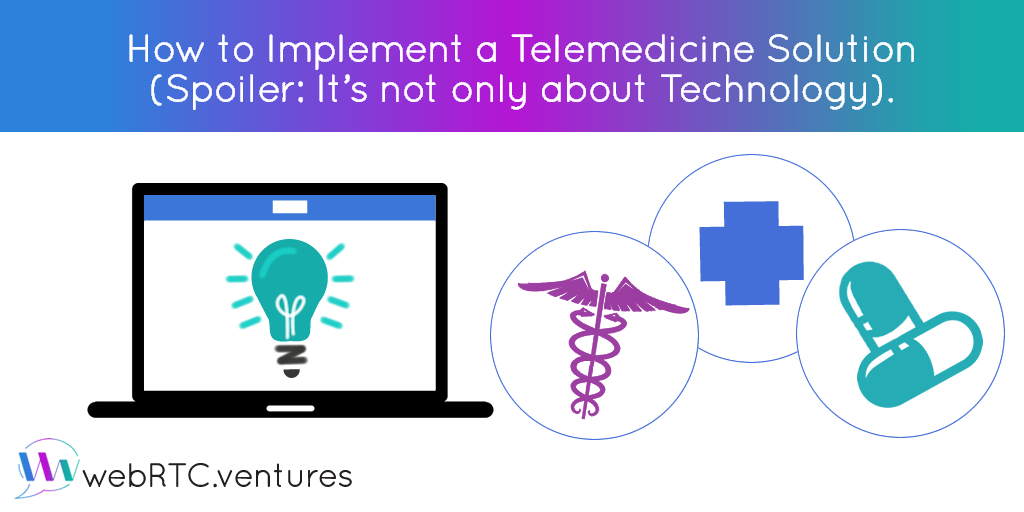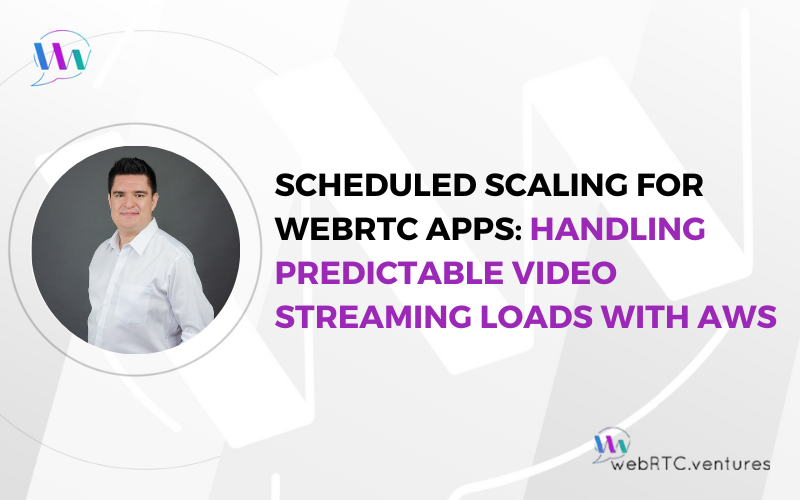Telemedicine has been gaining a lot of attention lately. What people could only imagine in the early 20th Century is now possible thanks to all of the technological advancements (Did someone say WebRTC?). In this article we will provide you with some tips that will teach you how you can join the trend and implement a successful telemedicine solution.
Everybody wants Telemedicine
The idea of telemedicine has been around ever since telecommunications has been possible. The concept of providing clinical health care from a remote location is something that people have wanted since the beginning of the last century.
Popular evidence of the aforementioned is 1925’s cover of the Science and Invention magazine by Hugo Gernsback, which featured a futuristic vision of how health services could be offered, by what the author called, “Doctors of the future”.
The current picture is quite similar, both parties, patients, and providers, are looking for more convenient and cost-effective ways to reach each other. The difference is that now, thanks to telecommunication and information technology advancements, this is now feasible and reachable.
However, barriers for telemedicine exist. Lack of clear regulatory laws for providing services and reimbursements, plus cultural issues are preventing several organizations to successfully adopt it.
Part of the problem is that many companies fail to design an appropriate process to implement their solution. They end up seeing the technology as the product, and most of the time this leads to solutions that are not aligned with organization’s goals and needs. Companies so far have not considered strategies to overcome known barriers.
The key for success is to develop a proper vision of the technology as the tool, and the construction of an implementation process that consider all the related components: people, resources, limitations, goals and objectives.
Building “The Process”
An effective process will vary from one company to another, but essentially it will require at least one of the following phases:
Define your Objectives
Ask yourself: What do you want to achieve with your telemedicine solution? Is it aligned with your organization’s objectives? This is important to ensure the final product actually contributes to reach company goals, which in turn will be the key factor that determines the success of the implementation.
For example, consider a hospital with limited medical staff that wants to expands access to specialists for its admitted patients. What would an appropriate telemedicine solution look like?
There is a clear objective and a target: “provide admitted patients access to specialists”. According to this let’s develop a simple vision of the product without going into much detail.
We would have a moving workstation equipped with a screen, microphone and camera. When needed, a local nurse or doctor would be able to take the workstation to the patient’s room and establish a connection with a remote specialist in matter of seconds or minutes.
And that’s it, simple as that we have aligned both the hospital’s objective with an outline of the telemedicine solution that would allow it to be accomplished. The key is to identify what the solution is able to achieve with regard to what the organization wants.
Design your Solution.
Once you’ve defined what you want to acquire, it’s time to design how you will do it. Build the workflows, write procedures, assign responsibilities, etc. Define who will do what, when and how.
Initially, think of your solution using an on-site approach, as if a remote provider is a descendent of a race of warriors and is able to use teleportation to get to the patient’s location. In other words, by now, don’t worry about the technological details, just design something that would work on a traditional health care basis. What works on-site, works also using telemedicine.
Also, this is the phase where the definition of the business model must take place. Even if some patients don’t mind paying a fee for telemedicine services, it’s important to consider what the applicable regulations state about reimbursements policies, covered services and conditions.
Add the Right Technology
Here comes the fun part. Now that you have defined your objectives and have a thought on how it is going to work, it’s time to put the cherry on the cake and take a look at the technologies you’ll need.
The mobile applications trend is leading the market. Simply take a smartphone, navigate to the app store and go to the “Health” category, there is plenty of software that users can download and use daily.
Simple home-use medical devices are also available at affordable prices.
These devices are able to perform tasks like taking vitals and diagnosing ear infections, monitoring glucose levels, or measuring blood pressure; in other words, they let patients gather needed medical information for a doctor’s diagnosis.
Patients are starting to use technology to monitor and track their health.
On the other hand, real-time technologies are emerging, like WebRTC, which excels in providing communication capabilities to browsers and mobile devices, and also in securing the transmission of the media content between the participants.
You can decide whether using an on-premise solution, that consists in hosting your own infrastructure, or using the services of a Communication-Platform-as-a-Service (CPaaS) provider such as Tokbox or Vidyo.
These technologies, when combined with other popular web and mobile- frameworks like React, allow you to build communication apps similar to those that users already have experience with, like Skype or Facetime.
Users are more likely to use apps that they are familiar with.
Also consider what types of regulations exist and how they affect the tools you’re using. When storing patients information you must provide security mechanisms that ensure the data won’t fall into non-authorized hands.
Legislation like HIPAA (Health Insurance Portability and Accountability Act) regulate the storage and transport of this information, so it is vital to make sure that the infrastructure that will support your application is compliant with such regulations.
Summarizing, the main idea is to look closely at the processes you’ve designed on paper and select the tools that fit best with what you want to achieve, while applying the required security measures.
The Right Order
So what is the right order to ensure the success of your Telemedicine Solution?
- Involve the People:
Doctors, Nurses, PATIENTS… don’t forget about the patients! Listen to their needs, problems and suggestions. Make them know that the solution will help them to improve the services they are providing/receiving and beyond that, make them know that they are part of the solution.
Also make sure everyone knows their role. Training your staff is crucial in order to ensure success. - Design the Process:
According to what your people have told you, write the workflow, tasks, processes and every single detail that could be involved in your Telemedicine solution. - Add the Tools:
Select the appropriate technology to do the job. (Pss… We can help with that 😉)
Building Value
At the end of the day, what should move the implementation of your telemedicine solution is the idea of building value for your patients.
The keyword is convenience, to build something that reduces patient’s time in waiting rooms and provides immediate quality primary care.
Equally important is the value for you as a provider or business associate, the main universal objectives of your telemedicine solution should be to reduce costs, extend access, increase your staff proficiency and quality of your services.
Patients are demanding a better customer experience from providers, and telemedicine is one way to reach people more efficiently.
Learn More
We have created a free educational eCourse. It is your guide to building telehealth apps with WebRTC video technology that are HIPAA-compliant.
Each week of the series, you will receive an email to your inbox with a downloadable eBook.
Ready to Build your Telemedicine Solution?
Let our experts at webRTC.ventures help you build your custom video and audio telemedicine app. We have decades of experience with over 200,000 hours invested in building real-time applications. You can read a client testimonial here.
Contact us today. We’ll build your user-friendly, HIPAA-compliant app — designed with both the provider and patient in mind.











